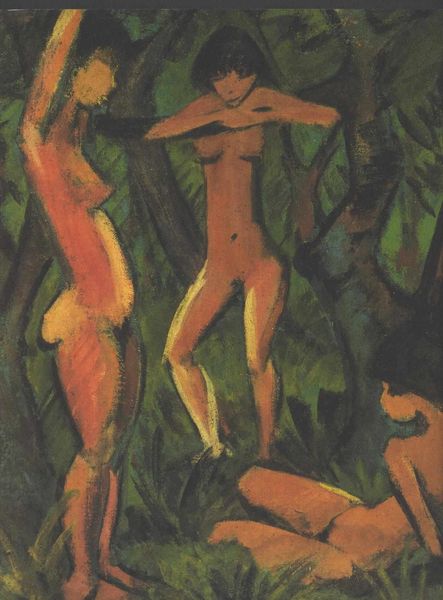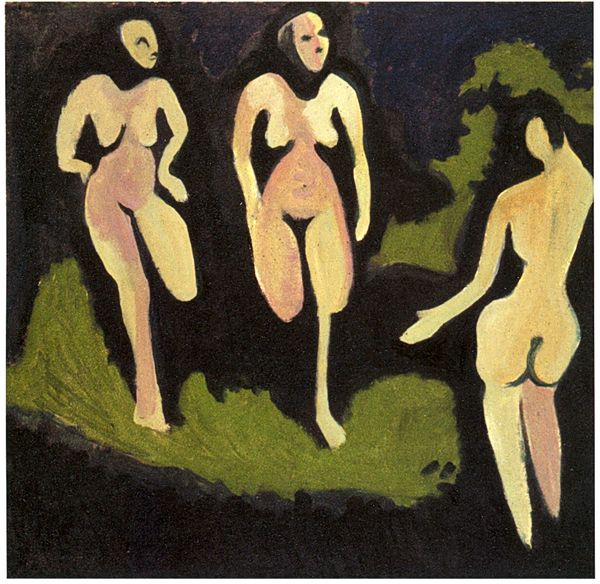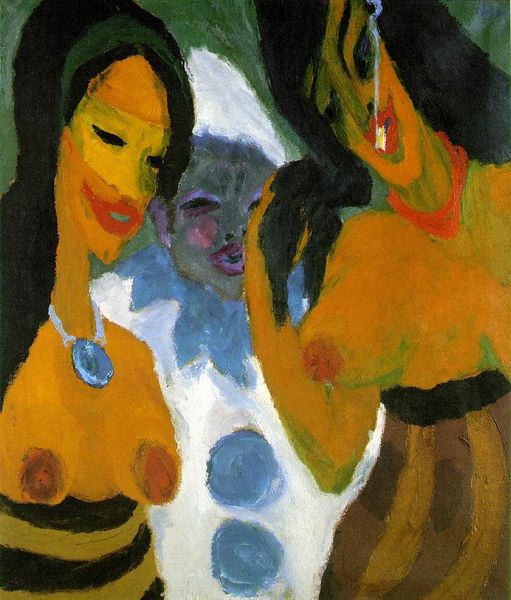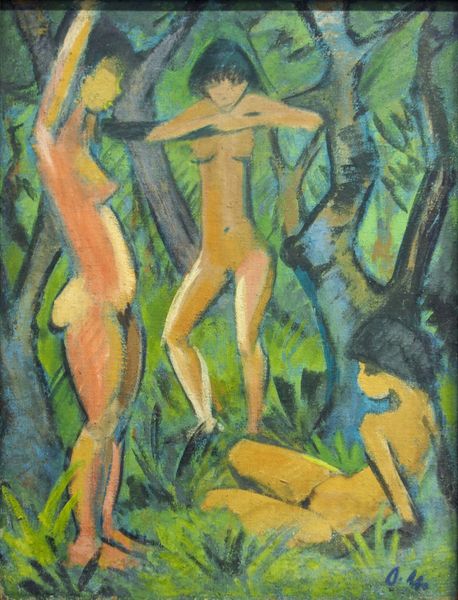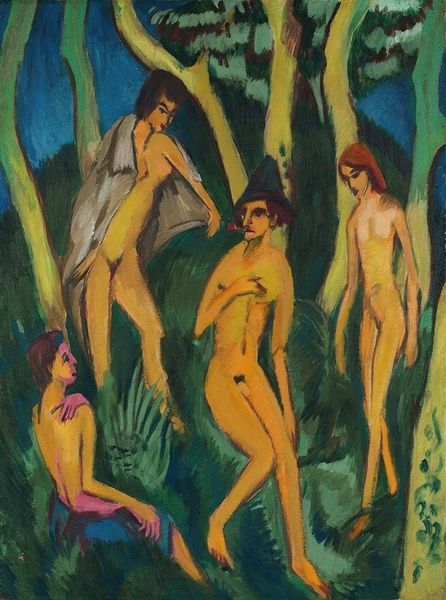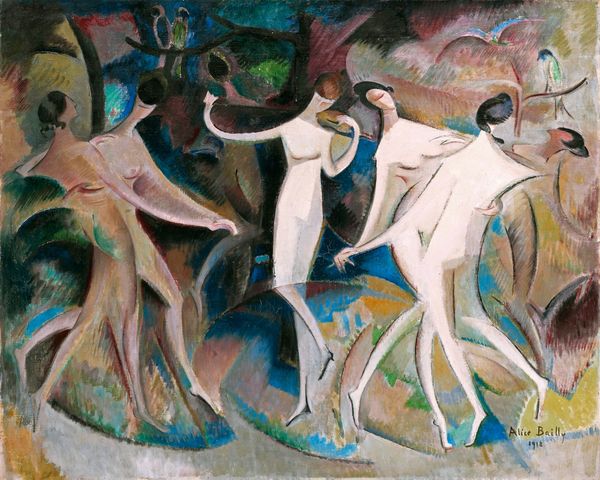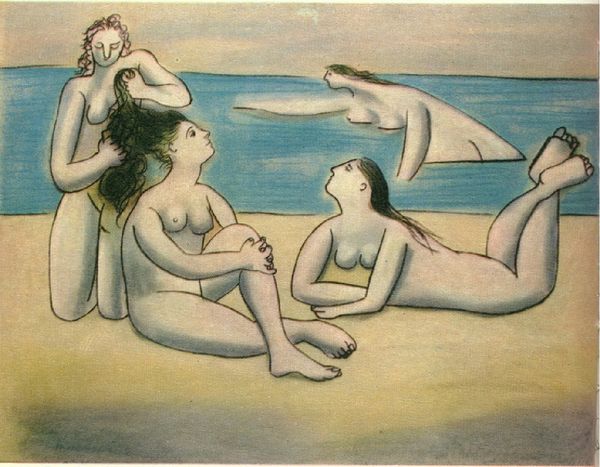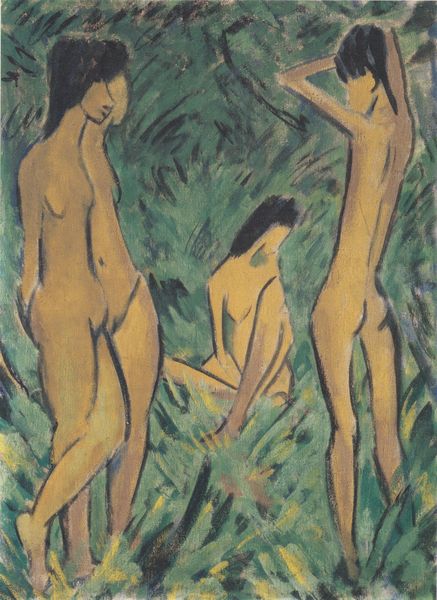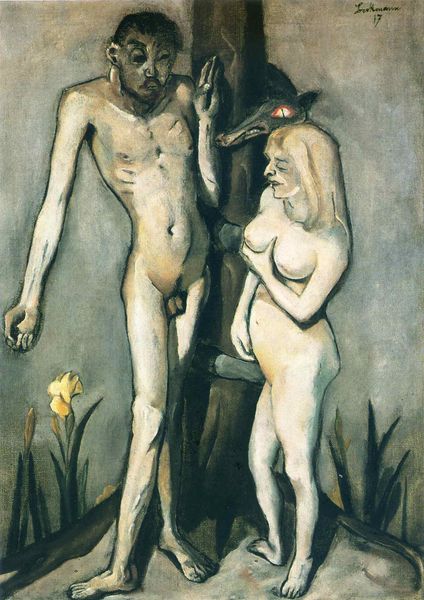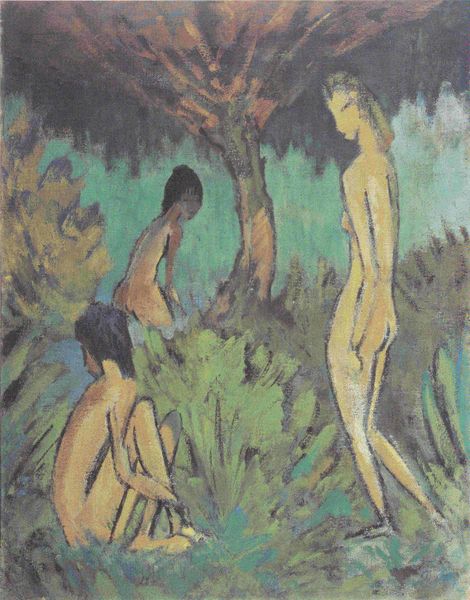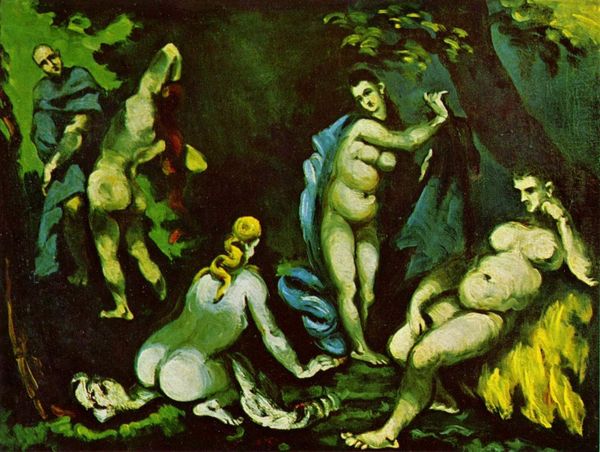
painting, oil-paint
#
painting
#
oil-paint
#
landscape
#
german-expressionism
#
figuration
#
oil painting
#
female-nude
#
group-portraits
#
expressionism
#
genre-painting
#
nude
#
expressionist
Copyright: Public domain
Curator: This is Ernst Ludwig Kirchner's "Three Bathers," painted in 1913. It’s currently residing at the Art Gallery of New South Wales in Sydney. Editor: Well, my immediate reaction is one of tension. The angular figures against those swirling greens, it’s uneasy, almost jarring. Curator: That uneasiness is quintessential Kirchner, channeling German Expressionism. The three figures—their nudity, set against this wild landscape—what do they evoke for you? Is it an innocent escape or something more fraught? Editor: Fraught, definitely. Look at the brushwork, those anxious strokes almost clawing at the surface. And the pigments! Thick impasto here and there. I’m curious about the source, and what kind of binder he would've used to get that effect... He almost sculpts the figures with paint, particularly around the contours. The materiality seems so loaded here, laden with emotionality. Curator: Absolutely. He's using that visual tension to probe the psychological weight of the modern nude, right? These aren’t passive objects. Look at their faces, each distinct and bearing an intensity that demands engagement. The wave-like patterns and the ambiguous jellyfish-like form really strike a chord, placing the bathers within a timeless, symbolic realm. Editor: Timeless, perhaps. But I see the hand of modernity so explicitly in its making. Consider the influence of industrial pigment production that led to such pure saturation of tones... Expressionism like this just wouldn't exist without changes to painting production methods, and these changes also allowed an emphasis on process within the artist's hand, which becomes quite important to artists seeking individuality through this style. Curator: I see your point. The mass-produced allowing for this intimate, hand-crafted feel is one of modernism's intriguing contradictions. However, for me, this artwork is so much more than a show of brushstrokes. It represents the archetype of the natural female in a society where sexuality was so often hidden or controlled. What can be revealed about our shared understandings when this scene of recreation turns into something closer to discomfort or isolation? Editor: True, those social aspects weigh on this canvas, a kind of performance of identity. Though for me, thinking of how his hands pressed paint onto canvas reminds me about how social contexts were also changing materially! Curator: An interesting dichotomy. Editor: Absolutely! It highlights just how interconnected technique, materials, and the symbolic weight become under such scrutiny.
Comments
No comments
Be the first to comment and join the conversation on the ultimate creative platform.
